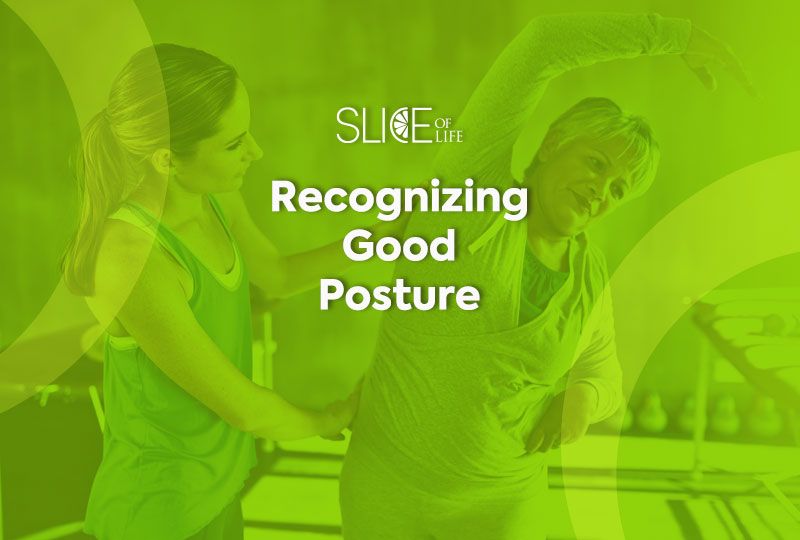Good and proper posture puts our bodies in a solid position to promote long-lasting health and well-being. For the average person just going about their day, posture is probably the last thing on their mind if at all because many of us are not in tune with our body’s movements. It’s about more than simply sitting up straight and investing in an ergonomic desk chair. A little self-awareness can go a long way to protecting the spine and preventing back pain, as well as improving athletic performance, vitality, coordination and breathing.
The Foundation for Chiropractic Progress identifies the five types of posture that a person can present in their article “Good Posture Helps Back Pain”. There are four problematic posture alignments compared to the one designated healthy posture. Let’s review what forms posture can take and learn how to classify our personal posture.
- Healthy Posture
There isn’t a clearly defined or perfect posture for every person and every situation, such as standing, sitting, walking etc. In general, good posture means limiting and supporting the natural curve of your spine, attempting to maintain as straight and stable as possible without excessive rigidity.
A few posture pointers to remember are:
- Keep your head above the shoulders. No craning back or handing the head heavy in front.
- The shoulders should be above the hips. If sitting, try to maintain a 90-degree angle as much as possible between the back and hips.
- Keep the lower body stable. This varies depending on what you are doing with your body. If seated, feet should be flat on the floor with knees bent 90- degrees and ankles separated. Use a footrest if your feet do not touch the ground. If standing, feet should be hip distance apart. Make sure to position yourself so that the majority of your weight rests in the balls of your feet.
(Adapted from the Cleveland Clinic.)
2. Swayback or Lordosis
When there is a significant curve in the spine or posture, that is known as swayback or lordosis. This is not to be confused with scoliosis, a condition where the spine curves and rotates to the side, though they can occur simultaneously. With swayback, the spine begin to curve inward beginning at the neck which forces the neck to dip forward as the rest of the body leans back. The stomach sticks outwards as the backside tucks in. The balance is therefore thrown off and undue stress is placed on the lower back. Anyone that carries excess weight in the abdomen can experience this. It is also common for pregnant women.
- Lordosis Changes
The natural curve of the spine can become alternatively exaggerated in two places, the neck and the spine. In this case, the head tilts forward, the stomach sticks out and the backside sticks out also. Stomach sleeping or wearing heels are two possible causes of this posture issue.
- Increased Thoracic Kyphosis
This is another form of spinal curve exaggeration, which can create more of a hunched or even humped back. A back brace may be required in some cases, while in other cases there is little to no discomfort. Shortness of breath or breathing difficulties can occur as well.
- Forward Head Position
Commonly referred to as Tech Neck, this flawed posture frequently occurs in individuals who learn over to look at a screen for long periods. The neck is intended to hold the head standing straight up, so when the head is leaned forward, it adds roughly 10 pounds or more of weight to your neck that can result in injury or pain. Stiffness or hunching shoulders, as well as neck tension are other indicators of forward head positioning.
This posture can occur in incorrect sitting arrangements Proper sitting posture moves the pelvis forward to support the lumbar lordosis. This brings the neck into a more natural alignment vertically and a level head to create normal cervical lordosis.
Posture Check
How do you know where you stand when it comes to your posture? Get a friend to snap a couple photos of you from the side standing, one where you try to create your best possible posture and one that is the way you normally stand. You can compare these to the posture types and see what might line up. Periodic self-checking and adjustments to posture can help improve postural health over time. Your best bet is to consult with a licensed chiropractor who can give you a fuller picture of your posture and other interferences that can be address through chiropractic adjustment.


Social Media